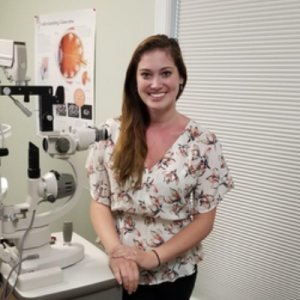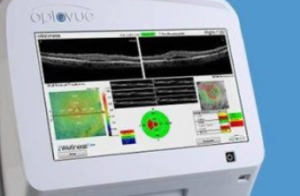Are you experiencing pain in or around your eye?
Visit your eye doctor immediately.
Anytime pain is experienced inside or adjacent to the eyes, it’s vital to have an eye doctor explore the cause.
Pain is the body’s way of telling you something is wrong.
Eye doctors have years of training and a range of sophisticated equipment to determine the root cause of any ocular pain and the best options for treatment.
Here are our top 9 frequently asked questions about eye pain.
Q1: If I have eye pain, do I need to see an eye doctor?
Yes.
If you feel pain in or near your eye it could be a sign of a serious eye problem.
The eyes are generally known as a ‘quiet’ part of the body, allowing us to read, drive, use a computer and enjoy our days without aches and pains.
If you are experiencing eye pain contact your eye doctor immediately as it could be a sign of a serious medical condition.
Q2: What are the most frequent causes of eye pain?
Ocular pain can be sourced from inside, outside or adjacent to the eye.
Below are the most frequent reasons for experiencing eye pain.
Inside the eye:
Outside or near the eye:
Q3: What is the best way to get sand or other small irritants out of my eye?
The most common reason people report ocular discomfort is small irritants such as sand, dirt or eyelashes in their eye.
In most cases, your eyes are equipped to wash out these irritants naturally. They do this by producing more tears and flushing the irritant out.
If this doesn’t work, try rinsing your eyes out with clean water or using artificial tears to wash them out.
If the irritant remains, see your eye doctor immediately, as the foreign object could cause corneal scratches or even deeper damage.
A word of caution: whatever you do, don’t rub your eyes to try to remove the irritant. This could cause a scratch on your eye called a corneal abrasion. Depending on the severity of the scratch, it could be quite painful.
Q4: What causes a stye on my eyelid and how is it treated?
An infection in the tiny glands located at the edges of your eyelids can sometimes result in the formation of a painful bump or nodule, known as a stye.
A stye can be very uncomfortable or painful, and often the tissue surrounding it can be very sensitive to the touch.
Your eye doctor will be able to determine appropriate treatment based on its location and whether it is affecting your vision.
In some cases, the optometrist may prescribe antibiotic ointment or choose to drain the stye in the office.
Note: You should not try to drain a stye by yourself, as this may cause permanent scarring on the eyelid and spreading of the infection.
SEE RELATED: Eye Emergencies
If you are experiencing eye pain contact an eye doctor near you immediately.
Q5: What should I do if my eye gets scratched?
Small scratches on the surface of the eye should be taken seriously, if you experience any discomfort or pain from a scratch to the eye, see your eye doctor immediately.
Pets and babies are the most common cause of a scratch to the cornea, the front part of the eye.
While your eye is healing from a scratch, you should not wear contact lenses.
For more serious scratches and injuries, such as a corneal ulcer, immediate emergency medical attention should be sought at your nearest ER, to prevent permanent scarring and potential vision loss.
Q6: What is conjunctivitis?
Conjunctivitis is also known as pink eye. It is an infection of the conjunctiva, which lines the underside of the eyelid and bottom of the eye.
Conjunctivitis is caused by either bacteria or a virus, and ranges from minor eye discomfort to extreme pain, together with a watery or sticky discharge and redness of the affected eye.
Conjunctivitis that is caused by a bacterial infection is characterized by yellowy discharge from the eye, while viral conjunctivitis results in excessively watery eyes.
Q7: Can glaucoma cause eye pain?
Yes.
The most common form of glaucoma, open-angle glaucoma, usually does not have any obvious signs until it’s too late and vision loss, known as Tunnel Vision, has occurred.
A particularly worrisome form of glaucoma, known as closed angle (or narrow-angle) glaucoma (CAG), can result in severe eye pain, along with nausea, vomiting, headache and vision loss.
CAG occurs as a result of a very fast rise in inner eye pressure, and is an eye emergency. Immediate medical attention at the nearest ER is vital to prevent permanent vision loss.
Q8: What should I do if a foreign object penetrates my eye?
Objects such as shards of metal, plastic or glass can cause severe eye pain and permanent loss of vision if they penetrate the eye, damaging sensitive structures within.
Specialty protective eyewear should be worn when working in spaces where such injuries might take place.
In the event of such an eye injury, do not attempt to remove the object yourself, as this could cause further damage and scarring to the eye.
Proceed immediately to the nearest emergency room, where medical professionals will be able to assist you.
Q9: When is eye pain an emergency?
If you experience any amount of eye pain, consult with an eye doctor immediately.
Medical attention at the nearest ER is required if the eye pain is a result of corneal or penetrating injuries, or is accompanied by symptoms such as vision loss, blurry vision, headache, nausea or vomiting.
LEARN MORE: Guide to Eye Exams
If you are experiencing eye pain, immediately contact an eye doctor near you.
Pain is the body’s way of telling you something is wrong.
Anytime pain is experienced inside or adjacent to the eyes, it’s vital to have an eye doctor explore the cause.










